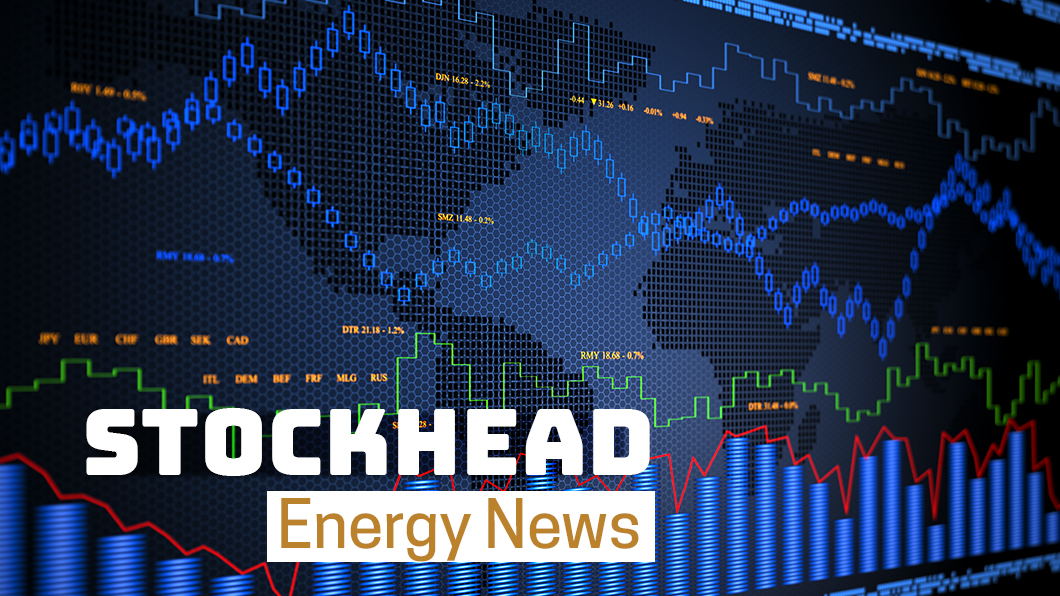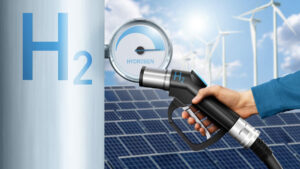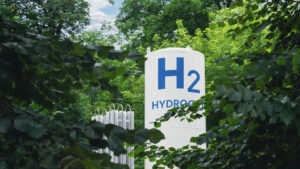Hydrogen could become more popular with drivers as a solution to ‘range anxiety’

Pic: Vertigo3d / E+ via Getty Images
Hydrogen is being touted as a potentially popular solution to the issue of distance – “range anxiety” – with electric vehicles.
The problem right now for many potential buyers of electric vehicles (EVs) is how far can they go before the battery needs charging?
But by incorporating hydrogen fuel cells into EVs, drivers can just pop into their local servo for a “top-up”.
Doug Spencer-Roy, corporate affairs and marketing manager for Melbourne’s EastLink motorway, told Stockhead that car makers like Toyota are now starting to “talk up” the hydrogen fuel cell.
In August the CSIRO demonstrated it could refuel two fuel-cell vehicles and released what is essentially a “blueprint” for the development of the hydrogen industry.
CSIRO chief Larry Marshall was one of the first to ride in the Toyota Mirai and Hyundai Nexo vehicles powered by ultra-high purity hydrogen, produced in Queensland using the national science agency’s membrane technology.
Toyota also revealed in early November that it was partnering with Hobson’s Bay City Council in Melbourne’s inner west to trial hydrogen-electric vehicles for 12 weeks.
- Subscribe to our daily newsletter
- Bookmark this link for small cap news
- Join our small cap Facebook group
- Follow us on Facebook or Twitter
During that period, the Mirais (which is Japanese for “future”) will be driven by council staff under a range of conditions and at different times of the day, just like any other vehicle.
Right now, lack of supporting infrastructure and the cost of hydrogen supply are barriers to any industry ramp-up, but these can be overcome “via a series of strategic investments along the value chain from both the private and public sector”, according to the CSIRO.
“Like most hydrogen powered vehicles, the Mirai isn’t currently available for sale in Australia, mainly because there isn’t existing hydrogen refuelling infrastructure to support it,” said Matt MacLeod, Toyota Australia’s manager of advanced technology vehicles and site development.
“We know that it’s only a matter of time before CO2 regulations arrive in Australia, and that’s why there is such a huge focus on zero emission vehicles like the Mirai.”
Stepping up the hydrogen push
Western Australia recently formed a Renewable Hydrogen Council.
State minister Alannah MacTiernan is leading the new council, comprising members of government, research bodies (ARENA and the CSIRO), and representatives from industry (such as Woodside, Engie and ATCO Gas).
Mr Spencer-Roy said although there isn’t yet a date for the launch of hydrogen EVs in Australia, car makers are “starting to really talk about them as being a good option” for the country.
“One of the things that’s holding back pure batteries in Australia is the range anxiety, and with hydrogen, as with hybrid, you’re eliminating the range anxiety because you can always drop in and top up,” he explained.
The market potential for hydrogen is huge.
The global market is worth $US130 billion ($178.6 billion) and the industry is forecast to grow to $US2.5 trillion by 2050, according to Morgan Stanley.
Though investment opportunities are limited at the moment.
Perth-based Hazer Group (ASX:HZR) is one of the few ASX-listed players dabbling in hydrogen. It has developed a technology for producing hydrogen and graphite from natural gas and iron ore.
One of Hazer’s goals is to be the first to supply hydrogen to the Australian market using its own technology, co-founder Dr Andrew Cornejo told Stockhead in August.
But while car makers might be talking up the technology, there is still a lack of awareness among drivers, according to a recent EastLink survey.
“There is a significant awareness gap,” Mr Spencer-Roy said.
“While only 8 per cent of respondents are unaware of battery electric vehicles, five times that proportion are unaware of hydrogen fuel cell electric vehicles.
“Manufacturers and other stakeholders should raise awareness of hydrogen fuel cell electric vehicles, to help with its emergence as a practical option for 100 per cent electric vehicles in Australia.”
UNLOCK INSIGHTS
Discover the untold stories of emerging ASX stocks.
Daily news and expert analysis, it's free to subscribe.
By proceeding, you confirm you understand that we handle personal information in accordance with our Privacy Policy.








